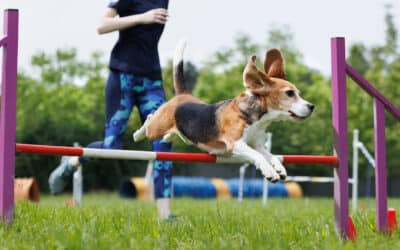Good training is at the heart of every happy dog and owner’s relationship. A dog that listens, trusts its owner, has a strong connection with them and enjoys spending time in their company.
So how do you get to this point with your own puppy? If you’ve just gotten a dog or are new to training, it can feel like an impossible, uphill battle. But don’t worry — every dog is trainable with the right mindset.
Getting a dog to do what you want starts by understanding how to express your needs. Dogs don’t understand how humans think. They don’t rationalize the way we do or draw conclusions.
Dogs live in the moment, so we have to train in the moment.
Focus on Motivation
In order for your dog to do what you want, you also have to understand what they want. Motivation is a key factor in successful dog training. Sometimes, owners may be doing all the right things, but their dog lacks the motivation to listen.
Motivation in training means encouraging your dog to listen. It’s not about ruling out of fear or authority. Instead, you inspire your four-legged friend to get excited about following your cues and building that strong connection.
Think about it — when you were a child, and you were playing outside, you didn’t want to listen to your parents when they called you indoors. Staying with your friends and playing was far more motivating than heading inside to scrub up and get ready for bed.
Likewise, dogs find attention and excitement far more motivating than being ordered around. Take a dog that won’t stop jumping on people. Even pushing them away or shoving them off of you is a form of attention. That attention, in turn, becomes more motivating to them. So, they’ll repeat the behavior, even if your own response is framed negatively.
Part of successful dog training is establishing positive motivational cues. These are signals that your dog uses to think, “Hey, that’s something I want to do.”
Strong motivational cues stem from conditioning. Positive reinforcement teaches dogs to associate things they love, like treats and belly rubs, with actions you want them to perform.
For example, if you’re teaching your dog to stop chewing, you interrupt their behavior, then replace the item with something favorable. Start praising him as he uses the toy. This teaches him that chewing on one thing elicits lots of reward.
Be Realistic
Having a realistic plan and expectations for your dog is crucial. New puppy owners often get frustrated because they expect overnight results, but puppies are like preschoolers. They won’t be mastering things instantly, and they don’t suddenly go from ABCs to algebra.
It’s helpful to focus on small, short-term training goals that build foundational skills.
With a dog that understands all the basics of obedience, it’s a lot easier to focus on higher-level training.
The OneMind Dog’s app provides a detailed breakdown of skills owners should focus on in sequential order. You can move around freely, but this plan is best for newcomers to dog training that want a roadmap for success.
Minimize Distractions
Another major struggle owners have with dog training is distractions. Sights, smells, and sounds all draw your pup’s focus away from you. For this reason, you should focus on creating a rewarding, calm training environment in the home.
What’s more, you should never try training outside until you’ve mastered a skill indoors.
Make sure that your dog is always focused on you before training. Otherwise, you’ll be fighting a losing battle with your environment.
Fill out the form below to join our Magical Connection Week email series to build a stronger bond with your dog. We will send you 7 days of FREE fun challenges, videos and training ideas!



